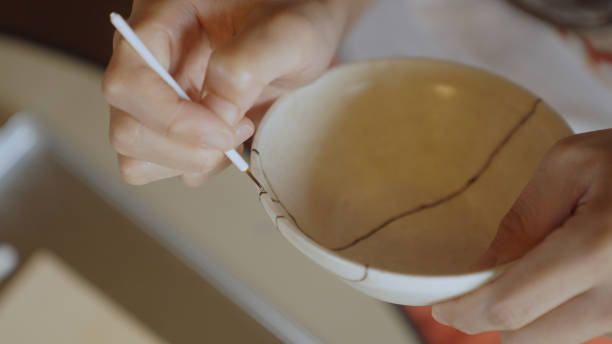Tatami, the traditional Japanese flooring, has deep roots in Japanese culture and architecture. Contemporary Interior Design It remains an integral element of tearooms, and it's the preferred surface for judo matches. Although wooden flooring is prevalent today, the timeless appeal of tatami endures, finding its place in modern interior designs. This article explores the versatile ways in which tatami is incorporated into contemporary interior design.
Exploring Tatami
Tatami consists of three main
components. The central layer, called tatami-doko, is crafted from materials
like dried straw. This layer is sandwiched between two outer layers known as
tatami-omote, woven together using a grass-like plant called soft rush. To
reinforce the long sides of each mat, fabric belts called tatami-beri are
added. While the size of tatami mats may vary by region, they typically measure
around 180 cm × 90 cm, maintaining a 2:1 ratio between length and width.
Traditional Sizing and Use
Traditionally, Japanese room sizes
were determined by the number of tatami mats they could accommodate.
Contemporary Interior Design Consequently, it's common for Japanese people to refer to room sizes in terms
of tatami mats; for example, a "six-mat room" conveys a clear idea of
its dimensions.Tatami's Practical Benefits in Japan
Japan's distinct seasons,
characterized by hot, humid summers and cold, dry winters, make tatami an ideal
choice for flooring. Tatami's exceptional thermal insulation retains heat
effectively while its moisture-absorption properties help regulate room
humidity. Traditional Japanese architecture allows air to flow beneath the
floor, preventing excessive humidity exposure for the tatami.
Complementing Japanese Lifestyle
Japanese culture has a long-standing
tradition of removing shoes inside homes and sitting on the floor instead of
using chairs. Tatami's flexibility and comfort align perfectly with this
lifestyle, making it a cherished feature in Japanese homes.Modern Innovations
in Tatami
Although wooden flooring has gained
popularity in Japan, tatami's appeal persists among those who prefer Contemporary Interior Design sitting
and sleeping on the floor. This demand has led to innovative adaptations of
tatami for modern homes. Synthetic plastic fiber tatami is now a practical
option, offering easy maintenance and resistance to dust mites and mold.
Colorful tatami variations are also available to enhance interior designs.
Manufacturers have introduced tatami
mats that can be placed on top of wooden flooring, enabling their use in
specific areas of a room for a sleek and contemporary appearance.
Tatami as Art
Tatami artisans have explored new
artistic possibilities, creating "tatami art" by fitting multi-sided
and curved mats together, resembling jigsaw pieces, to form intricate images
and geometric patterns. Non-traditional square-shaped tatami mats arranged in unique
patterns have also captured the imagination of many.
Tatami's ability to change color when
viewed from different angles has been harnessed for artistic effect. This
feature has been used to create motifs inspired by Japanese gardens and other
striking designs, where variations in weave affect light reflection, producing
the illusion of ever-changing colors.
Tatami's Timeless Evolution
Tatami, perfectly suited to the
Japanese climate and lifestyle, has been a fixture in Japanese homes for
centuries. Although its use has declined with changing living environments, its
enduring appeal as a comfortable and visually captivating flooring option
remains intact. Through innovation and artistic expression, tatami continues to
adapt to the evolving demands of the modern world.
Fashion & Design | Tech & Life
| Pop Culture"



.jpg)



